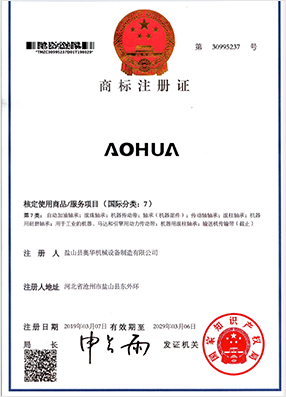 Afrikaans
Afrikaans  Albanian
Albanian  Amharic
Amharic  Arabic
Arabic  Armenian
Armenian  Azerbaijani
Azerbaijani  Basque
Basque  Belarusian
Belarusian  Bengali
Bengali  Bosnian
Bosnian  Bulgarian
Bulgarian  Catalan
Catalan  Cebuano
Cebuano  Corsican
Corsican  Croatian
Croatian  Czech
Czech  Danish
Danish  Dutch
Dutch  English
English  Esperanto
Esperanto  Estonian
Estonian  Finnish
Finnish  French
French  Frisian
Frisian  Galician
Galician  Georgian
Georgian  German
German  Greek
Greek  Gujarati
Gujarati  Haitian Creole
Haitian Creole  hausa
hausa  hawaiian
hawaiian  Hebrew
Hebrew  Hindi
Hindi  Miao
Miao  Hungarian
Hungarian  Icelandic
Icelandic  igbo
igbo  Indonesian
Indonesian  irish
irish  Italian
Italian  Japanese
Japanese  Javanese
Javanese  Kannada
Kannada  kazakh
kazakh  Khmer
Khmer  Rwandese
Rwandese  Korean
Korean  Kurdish
Kurdish  Kyrgyz
Kyrgyz  Lao
Lao  Latin
Latin  Latvian
Latvian  Lithuanian
Lithuanian  Luxembourgish
Luxembourgish  Macedonian
Macedonian  Malgashi
Malgashi  Malay
Malay  Malayalam
Malayalam  Maltese
Maltese  Maori
Maori  Marathi
Marathi  Mongolian
Mongolian  Myanmar
Myanmar  Nepali
Nepali  Norwegian
Norwegian  Norwegian
Norwegian  Occitan
Occitan  Pashto
Pashto  Persian
Persian  Polish
Polish  Portuguese
Portuguese  Punjabi
Punjabi  Romanian
Romanian  Russian
Russian  Samoan
Samoan  Scottish Gaelic
Scottish Gaelic  Serbian
Serbian  Sesotho
Sesotho  Shona
Shona  Sindhi
Sindhi  Sinhala
Sinhala  Slovak
Slovak  Slovenian
Slovenian  Somali
Somali  Spanish
Spanish  Sundanese
Sundanese  Swahili
Swahili  Swedish
Swedish  Tagalog
Tagalog  Tajik
Tajik  Tamil
Tamil  Tatar
Tatar  Telugu
Telugu  Thai
Thai  Turkish
Turkish  Turkmen
Turkmen  Ukrainian
Ukrainian  Urdu
Urdu  Uighur
Uighur  Uzbek
Uzbek  Vietnamese
Vietnamese  Welsh
Welsh  Bantu
Bantu  Yiddish
Yiddish  Yoruba
Yoruba  Zulu
Zulu conveyor pulley specification
Conveyor Pulley Specifications Ensuring Optimal Performance
Conveyor pulleys play a crucial role in the efficient operation of conveyor systems. As essential components, they perform the vital function of supporting the conveyor belt and facilitating the movement of materials across various industrial applications. To ensure optimal performance, it is essential to understand the specifications and factors that influence the selection of conveyor pulleys.
1. Types of Conveyor Pulleys
Conveyor pulleys are categorized based on their function and design. The primary types include
- Drive Pulleys These are responsible for powering the belt and must provide the necessary torque and tension to maintain movement. - Idler Pulleys Positioned along the conveyor system, idler pulleys support the belt while minimizing friction. They do not drive the belt but are critical for maintaining alignment.
- Tail Pulleys Located at the discharge end of the conveyor, tail pulleys help in guiding the belt and returning it to the drive pulley.
Each type of pulley serves a unique purpose and, therefore, comes with specific design and performance specifications.
2. Key Specifications
When choosing conveyor pulleys, several key specifications need to be considered
- Diameter The diameter of the pulley affects the belt's wrap angle and the amount of tension required for optimal belt performance
. Standard diameters vary from a few inches to several feet, depending on the application.- Face Width This refers to the width of the pulley and is critical for ensuring proper belt alignment and material handling. Wider pulleys can accommodate heavier loads and larger belts.
conveyor pulley specification

- Material Construction Pulleys can be made from various materials, including steel, aluminum, and plastic. The choice of material impacts durability, weight, and resistance to wear and corrosion.
- Weight Capacity Different applications demand different load capacities. Specifications should include the maximum weight the pulley can handle to avoid failure during operation.
- Shaft Size The size and type of the shaft are vital as they dictate how the pulley will be mounted and its ability to transfer forces without bending or breaking.
3. Performance Factors
The performance of conveyor pulleys is influenced by several factors
- Environmental Conditions Pulleys must be selected based on the operating environment, including temperature, humidity, and exposure to chemicals.
- Speed The speed of the conveyor system can affect wear and tear on the pulleys. Higher speeds may require more robust pulley designs to handle the increased stress.
- Belt Tension Proper tension is crucial for the effective operation of the conveyor system. Adjustable pulleys can help maintain the correct tension throughout the operation.
Conclusion
Selecting the right conveyor pulley is essential for ensuring the efficiency and longevity of conveyor systems in various industries. Understanding the specifications—such as type, dimensions, material, and performance factors—enables engineers and procurement specialists to make informed decisions that optimize material handling processes. With the correct pulleys in place, organizations can improve productivity, reduce maintenance costs, and enhance operational efficiency.
-
Revolutionizing Conveyor Reliability with Advanced Rubber Lagging PulleysNewsJul.22,2025
-
Powering Precision and Durability with Expert Manufacturers of Conveyor ComponentsNewsJul.22,2025
-
Optimizing Conveyor Systems with Advanced Conveyor AccessoriesNewsJul.22,2025
-
Maximize Conveyor Efficiency with Quality Conveyor Idler PulleysNewsJul.22,2025
-
Future-Proof Your Conveyor System with High-Performance Polyurethane RollerNewsJul.22,2025
-
Driving Efficiency Forward with Quality Idlers and RollersNewsJul.22,2025





























